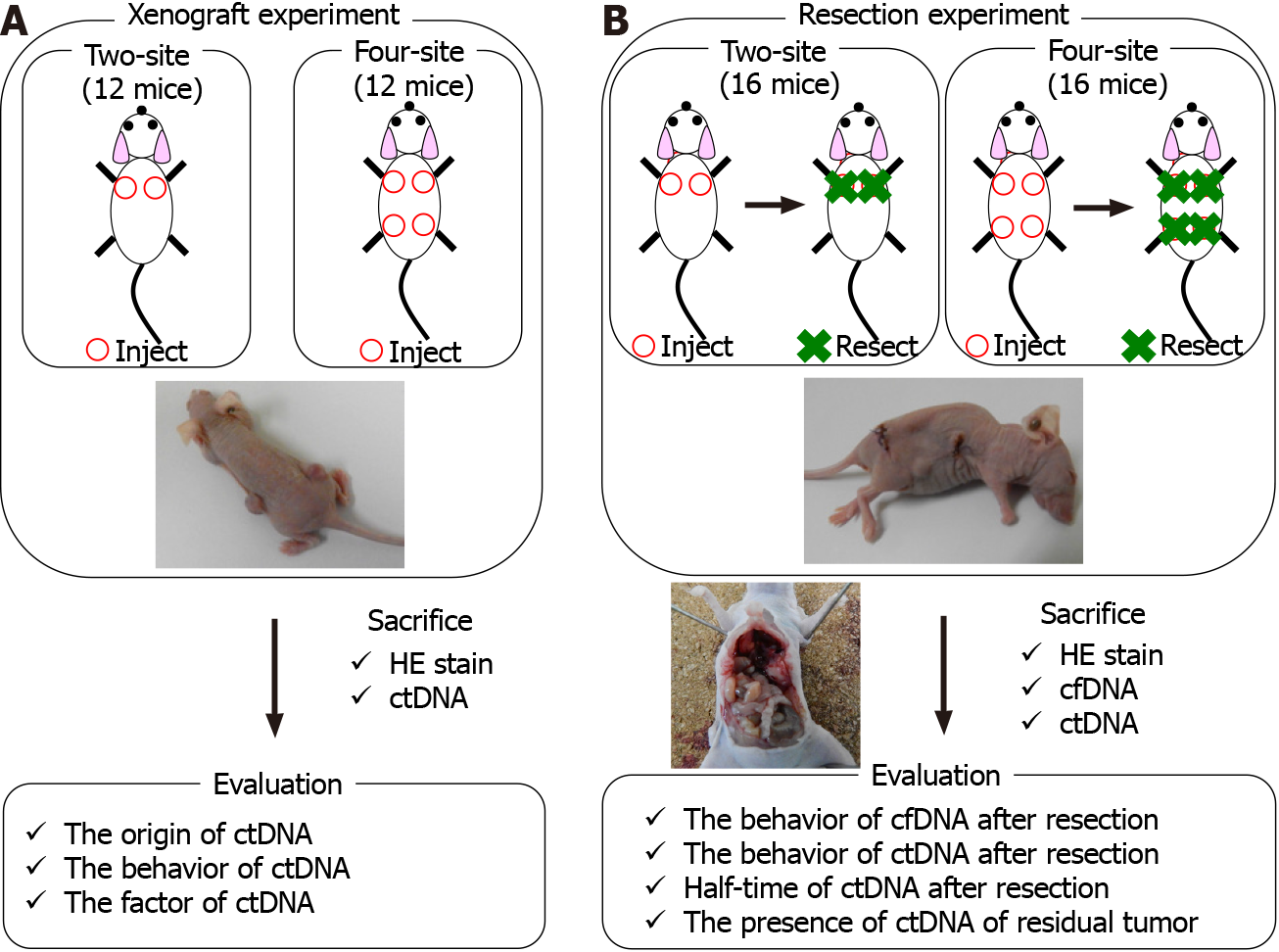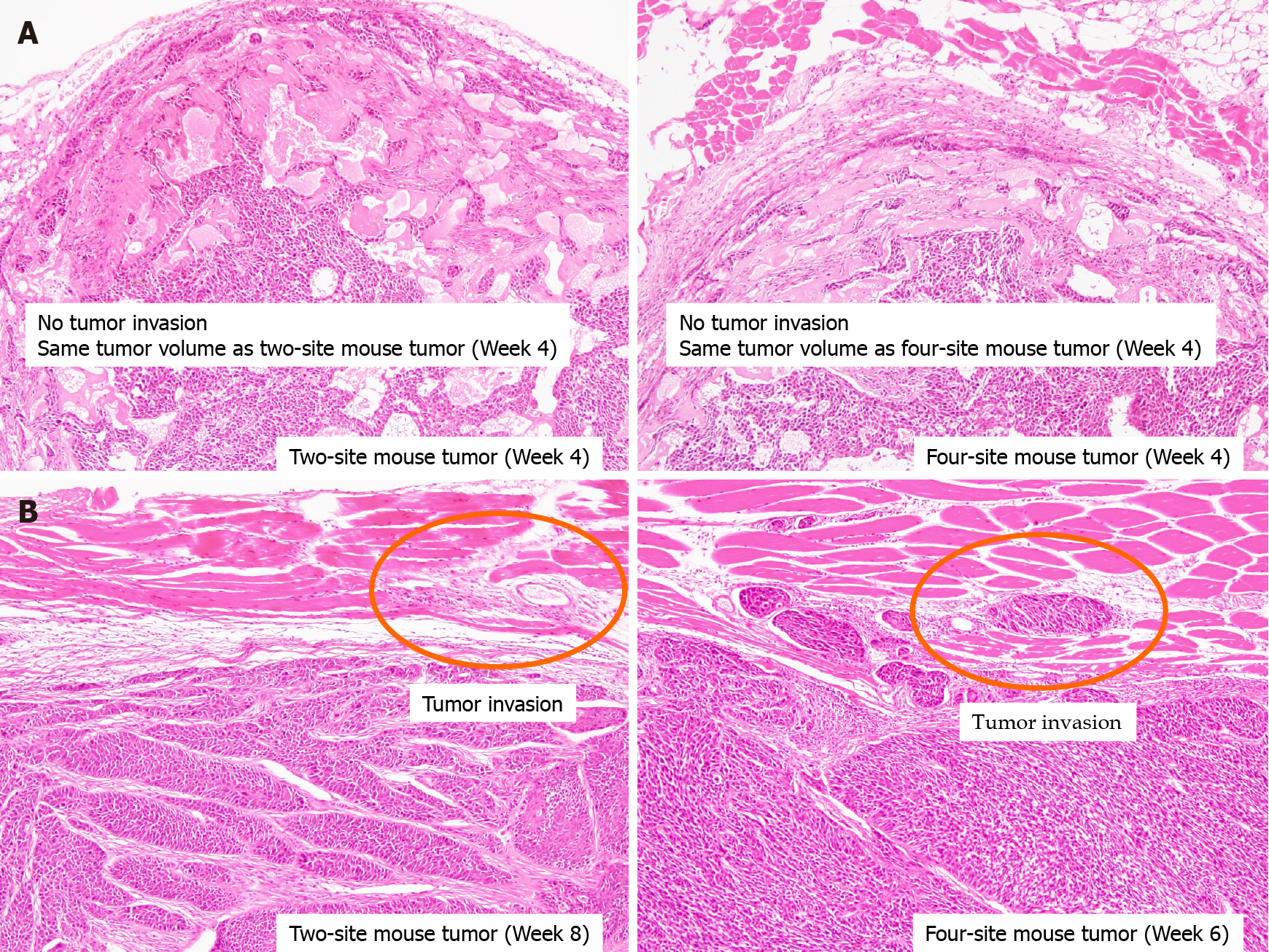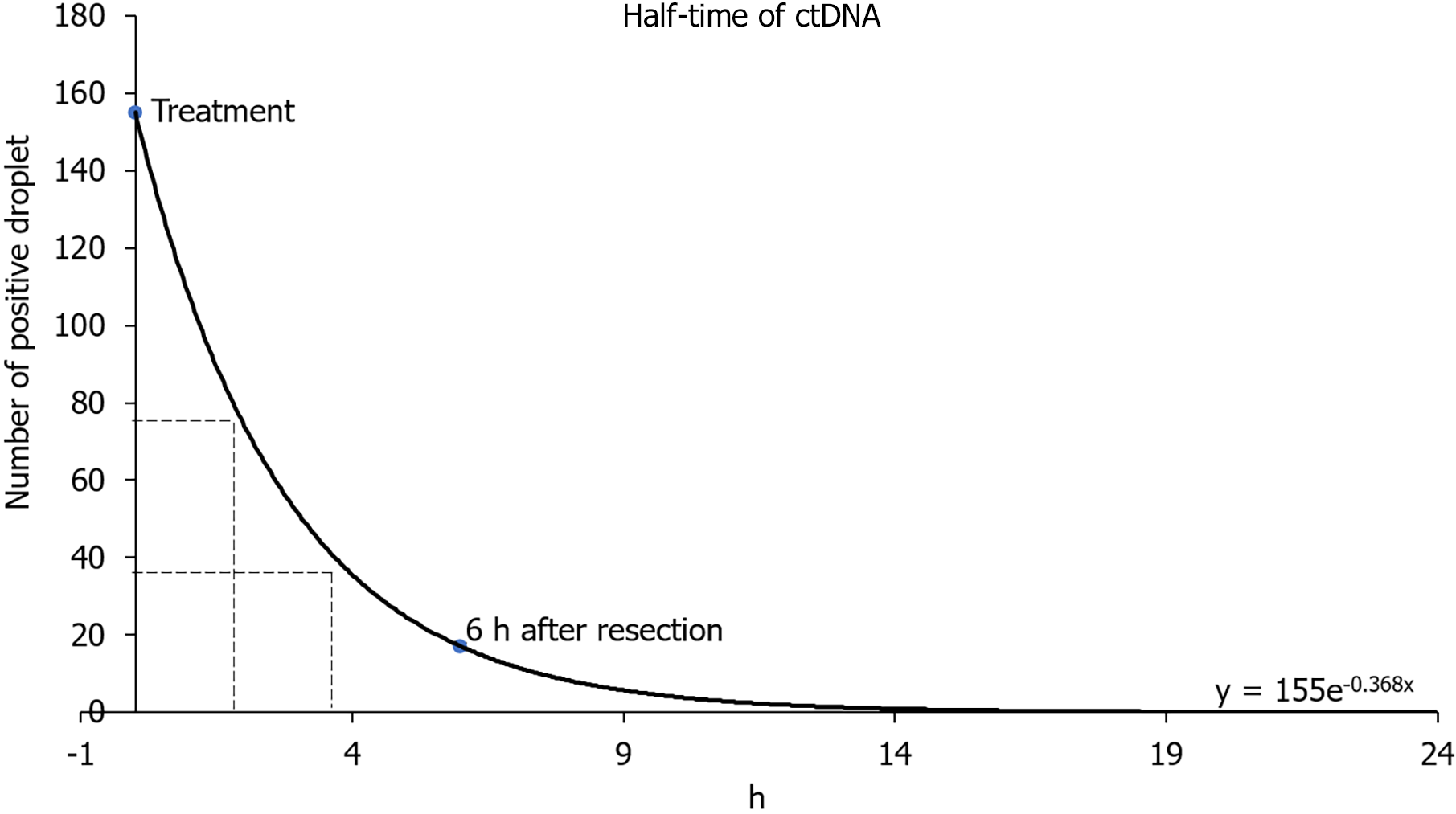Copyright
©The Author(s) 2021.
World J Gastroenterol. Nov 7, 2021; 27(41): 7134-7143
Published online Nov 7, 2021. doi: 10.3748/wjg.v27.i41.7134
Published online Nov 7, 2021. doi: 10.3748/wjg.v27.i41.7134
Figure 1 Xenograft mouse model with TE11 cell.
A: In the xenograft experiment, groups of 12 mice each were given two-site xenografts or four-site xenografts; B: In the resection experiment, groups of 16 mice each were given two- or four-site xenografts. All tumors were resected at week 7 after xenotransplantation in two-site xenograft mice, or at week 5 in for-site xenograft mice.
Figure 2 Telomerase reverse transcriptase assay by droplet digital polymerase chain reaction for mouse plasma, liver tissue, TE11 cell and water.
The presence of mouse telomerase reverse transcriptase (mTERT) and human TERT (hTERT) forms of the wild type TERT was analyzed by droplet digital polymerase chain reaction. A: The assay correctly detected mTERT in mouse plasma and liver tissue; B: hTERT was detected in the TE11 cell line. Neither mTERT nor hTERT was detected in water.
Figure 3 The dynamics of circulating tumor DNA in xenograft experiments.
A: Two-site and four-site xenograft mice were sacrificed for circulating tumor DNA (ctDNA) at week 4. Human telomerase reverse transcriptase (hTERT) was detected only in four-site xenograft mice, not in two-site xenograft mice; B: In both two-site xenograft mice sacrificed for ctDNA at week 8 and four-site xenograft mice sacrificed at week 6, hTERT was detected.
Figure 4 Histopathology of xenograft mouse with TE11.
A: Histopathology showed absence of invasion in tumors at week 4 in mice with two-site or four-site xenografts; B: Muscle invasions were observed in tumors at week 8 in two-site xenograft mice, and at week 6 in four-site xenograft mice.
Figure 5 The dynamics of circulating tumor DNA in resection experiments.
A: Tumor resection was performed when tumor diameter xenograft mice exceeded 10 mm, at week 7 in two-site xenograft mice, or at week 5 in four-site xenograft mice. Human telomerase reverse transcriptase (hTERT) circulating tumor DNA (ctDNA) was detected at resection (control), had decreased by 6 h, and was undetectable 1 d and 3 d after resection; B: On the other hand, in four-site xenograft mice, hTERT (ctDNA) was detected at resection (control), 6 h, 1 d, and 3 d after resection. cfDNA: Cell-free DNA.
Figure 6 The half-life of circulating tumor DNA in resection experiments.
To estimate half-life of circulating tumor DNA in two-site xenograft mice in the resection experiment, the number of positive droplets vs time after resection was fit to an exponential curve, y = 155e - 0.368x.
- Citation: Terasawa H, Kinugasa H, Nouso K, Yamamoto S, Hirai M, Tanaka T, Takaki A, Okada H. Circulating tumor DNA dynamics analysis in a xenograft mouse model with esophageal squamous cell carcinoma. World J Gastroenterol 2021; 27(41): 7134-7143
- URL: https://www.wjgnet.com/1007-9327/full/v27/i41/7134.htm
- DOI: https://dx.doi.org/10.3748/wjg.v27.i41.7134














